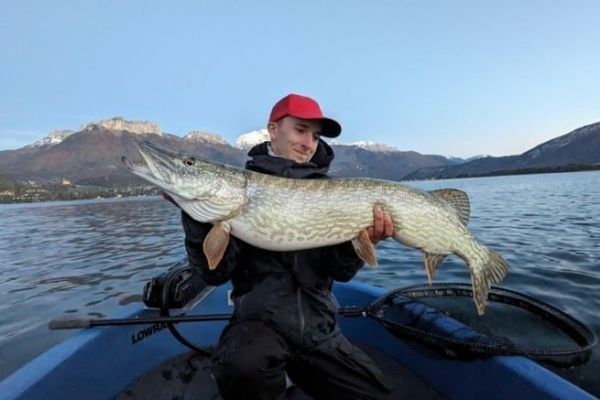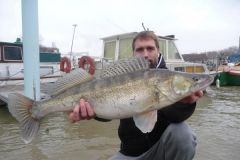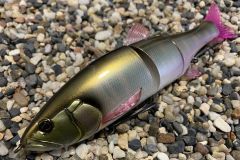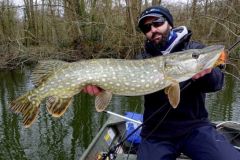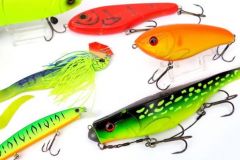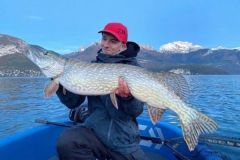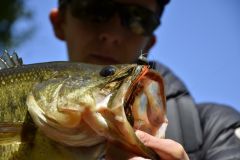Breaks in small bodies of water
Once autumn has passed and pike have stocked up for the cold season, they become more difficult to catch as their metabolism slows down. Its survival objective is to consume as little energy as possible, while storing as much as possible.
In most small bodies of water, deep areas are scarce, and all the pike in a small lake can't gather in a single spot, otherwise they'll face competition for food. They will therefore spread out and divide into small groups of 2 to 3 individuals of the same size, close to a break. The break offers them easy access to different depths to find the water layer with the most favorable temperature, just like the white fish they feed on.
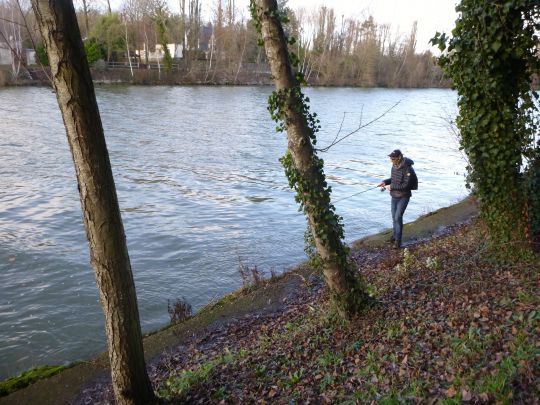
Quiet zones in watercourses
Streams whose flow increases drastically during the winter season, due to rainfall, are difficult biotopes for a fish to live in. Temperatures are generally very low, and a thaw would mean melting snow and even lower water temperatures. Pike then seek shelter as far as possible from the current, which is a major energy consumer for them.
Simply staying in place 24 hours a day in the middle of a river like the Rhône or the Seine is impractical, even less so for juveniles and old fish. The meandering nature of a river or stream almost always creates calm zones, much appreciated by fish in winter. Once again, all white fish do the same, making life easier for predators who need only wait for prey to pass within reach.
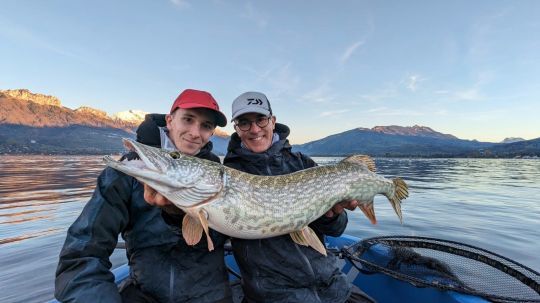
Pelagic on large lakes
Large lakes and very deep water create a behavior in pike that we understand better and better with each passing year. The fish leave the edges, as the living surface is far too small for the number of fish. Pike generally live at depths of between 0 and 30 meters, but so do all their congeners. The big fish will therefore seek out larger prey that share their pelagic behaviour.
For a pike, the advantage is obvious: it can feed by lying in wait all day, without moving, while having access to different depths if the water temperature changes. Generally speaking, Alpine, southeastern and eastern lakes are ideal for this type of winter pelagic fishing, thanks to their great depths.

 /
/ 